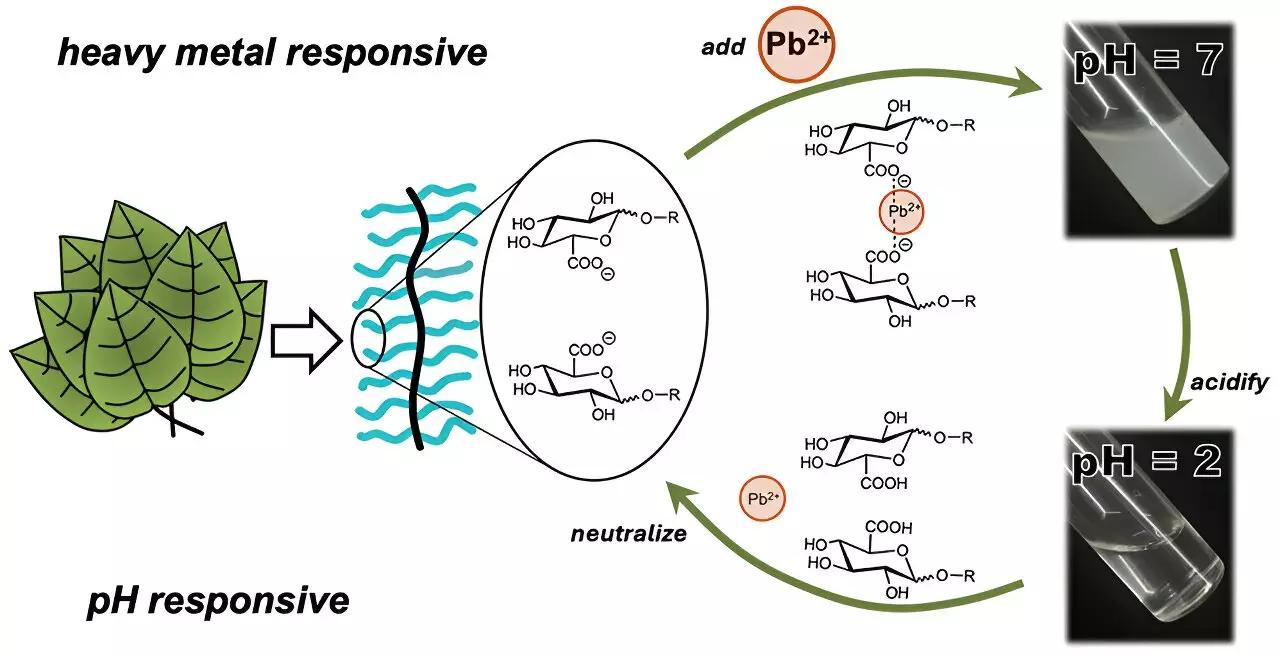Water pollution is an alarming issue that deeply affects both human health and the environment. Among the diverse contaminants, heavy metals, such as cadmium and lead, stand out due to their toxicity and persistence in ecosystems. Consumption of water riddled with these metals can lead to serious health concerns, necessitating urgent and innovative solutions for water treatment. Traditional methods for heavy metal removal, including various filtration systems, often result in significant energy consumption, and such systems are frequently hindered by rapid clogging, requiring costly replacements. As researchers delve into more sustainable solutions, the exploration of biopolymer technologies emerges as a promising alternative.
In recent years, scientists have increasingly focused on leveraging plant-based polysaccharides for water purification because of their inherent ability to adsorb metal ions. These natural compounds serve as a protective barrier in plants, trapping unwanted elements and fortifying cellular structures. For instance, studies have already demonstrated the use of polysaccharides sourced from okra and aloe vera for extracting microplastics from wastewater, showcasing their versatile applications beyond mere metal ion capture. However, a significant hurdle remains: many polysaccharides are soluble in water, which complicates direct metal removal efforts, necessitating various additives to stabilize these substances into insoluble forms.
To address these challenges, a team led by Cassandra Callmann at the University of Texas at Austin embarked on a mission to design a novel polymer with tailored solubility. Their groundbreaking approach involved developing a versatile polymer structure capable of effectively binding heavy metals while maintaining form stability in aquatic environments.
The researchers constructed an innovative polymer with a durable, water-insoluble backbone, enhanced by water-soluble carbohydrate “charms” designed to attract heavy metal ions. Different configurations of these charms were tested, leading to a significant discovery: a carbohydrate containing a carboxylic acid group exhibited the highest efficacy in attracting cadmium ions. This specific structural transformation allowed the polymer to create visible clumps within a short timespan, successfully isolating the cadmium for easy removal from the water.
Moreover, one of the standout features of this polymer is its dynamic reusability; by adjusting the pH levels of the surrounding water, the polymer could release cadmium ions and be repurposed for additional rounds of filtration. After undergoing three cycles of binding and release, the polymer demonstrated no significant loss in its metal-trapping capacity. This recycling capability not only highlights the environmental friendliness of the solution but also reinforces its viability as an economically sustainable choice for water treatment.
The researchers took their findings a step further by applying the carbohydrate polymer to contaminated samples from the Colorado River, simulating real-world conditions that frequently contain a mix of various ionic compounds. Results were promising; the polymer successfully extracted 20% of the cadmium and an impressive 45% of the lead from the spiked samples, while exhibiting minimal interaction with other essential minerals such as calcium, sodium, and magnesium commonly found in river waters. This selectivity shows great promise for enhancing the efficiency of water purification processes, paving the way for more tailored solutions to heavy metal contamination.
As environmental concerns continue to escalate, the pressing need for effective and sustainable water purification technologies grows. Sugar-derived polymers present a revolutionary path forward, combining the innate capabilities of plant materials with cutting-edge research in polymer chemistry. Future research will undoubtedly explore optimization of these materials for larger-scale applications and investigate their efficacy against a broader range of pollutants. With innovations like these at the forefront, we may be on the verge of significant advancements in ensuring clean and safe water for both ecosystems and populations worldwide.

